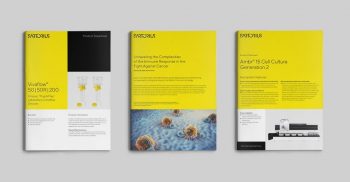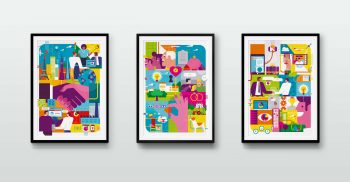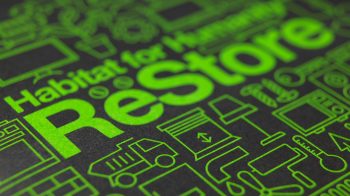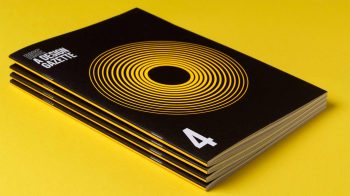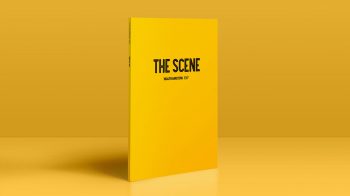The rise of the flexible identity
In their simplest form, corporate identity delivers recognisibility to a business through words, pictures and sound. Ideally leading to differentiation and if possible legal protection. Designing these identities are the cornerstone projects for all designers and design agencies. But identity like pretty much everything else in the branding and communications locker these days, is changing. Evolving is perhaps a more accurate term, in parallel with the constantly shifting cultural and social contexts that it has to work in and driven by the technological advancements of our age. Bah .. digital.
Back when I started out, when the earth was young and if you had a P or two you could call yourself a marketer, we had one logo to play with, in a handful of sizes, controlled by strict rules on where, how and when it could appear. Oh, and don’t ask any questions. Brand managers were all about control based on a strategy of consistency and repetition. Message, tone, visual, all were stoically briefed to agencies to be the same, irrespective of channel or audience. And for anyone coming up with an identity from scratch the desires of the marketing dept were equally clear; give me something simple, coherent and repeatable, I repeat, repeatable. Across all touchpoints, at all times with a stonkingly big set of guidelines in tow just to finish off the invoicing.
Which is pretty much why we all ended up with a static logo ‘stamp’, that sat like a grumpy aunt at easter, never moving, the same message, look and feel, time after time after time.
But today life is different. In many ways. But for us designers and for you brand managers the rapid development of communication technologies and the changing role and demands of the modern consumer are forcing the way we now use and manage our corporate identities. Now they need to work seamlessly across platforms, devices and timezones and to deliver irrespective of screen, paper or billboard size. Business communication is simply that much more fluid, demanding, diverse and less controllable. The grumpy aunt may still be on the sofa but the world has moved on.
Which is why, 40 years and 68 technical revolutions, the invention of branding and a global pandemic later it comes as no surprise that people have started to question the old ways. In the last few years, more and more high profile projects have used a more flexible approach to identity and here I am going to consider just a little of why flexibility works, what it means for the design process and what it says about the businesses that have adopted it.
Building the right rapport
Todays visual identities must interact with audiences on a level unheard of 20 years ago. How they provoke conversations, ask the right questions, provide suitable channels for feedback and stay memorable and relevant has to mirror how we now listen, discuss and react to all that we see and hear in everyday life. All these issues and no doubt more are subjects that each identity and marketing communications manager has to consider and prepare for.
The ‘experience’ and emotional connection your identity creates will often determine if it survives. How well it listens and adapts to the needs of its audience also contribute hugely to success or failure. As Marina Willer puts it ‘Design isn’t decoration, it has to reflect the behaviour of it’s users, and today’s users want to have a voice’.
As a result, what the consumer wants and expects is now the driving factor. Were expectations met; was the ‘experience’ an agreeable one? If what we promise falls short, the modern consumer will provide feedback which will be frequent, vivid, publicly and with great ease. Which is why the modern identity is all about the rapport, the relationship, not the sell. And why we are increasingly seeing identities with the flexibility and intuition to adapt and change to suit their consumers moods and whims as well as their needs.
So why so now? Quite simply because organisations, businesses and products are finding that an identity with some built in flexibility addresses the challenges of multi-channel, multi-lingual, multi-format, self-absorbed self-publishing consumerism in a way that is by jiminy, really rather useful.
So what’s the skinny?
While structure and guidelines are not a thing of the past, control is becoming increasingly outdated. Which is why the agency brief today is about setting the parameters of what creates the ‘familiar’ within identities, the core meaning, while allowing nuances in production and interpretation to blur at the edges. And it is our job as designers to gauge what these parameters are. How far we can push that flexibility and how much we need to lock down along the way.
Chief among the drivers for this change is the growth of digital (and social) media and the equally rapid developments made in the (Internet-enabled) devices that have completely altered the way identities are seen, touched and felt: Google’s “New Multiscreen World” study showed that 90% of all media consumption now happens on a screen with a full 38% on smartphones alone. And by its very nature digital demands flexibility.
Since the introduction of mobile, responsive websites and social, the days of a logo being a fixed size, anchored unchanging, unflinching, to a set position just seems a bit daft. Consistency, while still desirable, is now not the main driver of an identity system. In fact, when you think about it, to try to predict, codify and then control all potential instances of a brand’s identity is quite simply impossible and for many counterproductive. The smart brands have realised its better to embrace executional variance, what we see and hear to you and me, by creating identities that can deliver that familiar feel but can also live and work comfortably in this multi-channel world of ours.
Fine but back in the day …
Thinking like this sounds like a recent trend in design, but it isn’t. Flexible corporate design has its roots in Swiss modernist graphic design – citing Karl Gerstner’s identity for Boîte à musique, a record shop in Basel, in 1959 as most probably where it all began.
A design which made adaptability and flexibility the core elements of its style and signature this is probably the first example of a designer starting to think about identity operating on more than a visual level. Gerstner started thinking of identity communicating personality rather than simple communicating consistency.
Skip forward 22 years to August 1st, 1981 and the worlds first video music channel starts broadcasting. In the words of VJ Nina Blackwood, all day, all night, in stereo. Designed as a blank canvas for creativity the MTV logo has changed innumerable times over the past 26 years. Yet in each iteration it has remained fundamentally the same, adapting on a purely stylistic level to match the latest graphic trends. The logo was conceived to embody a rock ‘n’ roll attitude that totally rejected corporate design. It took on the attitude of the audience it was broadcasting to and, to this day, it continues to change, constantly aligning itself to its audience’s taste.
And we’re skipping … right into 1998 when what we know as the Google Doodle first made its appearance. This special, temporary alteration of the logo was intended to commemorate holidays, events, achievements, and notable historical figures. The first honored the 1998 edition of the Burning Man event in Black Rock City, Nevada, and was designed by co-founders Larry Page and Sergey Brin to notify users of their absence in case the servers crashed. Since 2001, a team of employees called “Doodlers” has been responsible for designing the doodles we see today. It’s a pretty basic example of flexibility but when you consider what Google’s identity is made up from its also pretty central too.
And since the turn of the century examples of this approach have become much more common.
The Whitney Museum’s flexible W is a logo that ‘responds to the artworks and words around it.’ Designed by Experimental Jetset, the new identity ‘embraces the inventive spirit of the Museum’ (https://whitney.org/new-identity). Further well known examples include North’s identity for The Barbican, The City of Melbourne logo, Wolf Olin’s work for AOL and Pentragram’s design of the MIT MediaLab (https://www.pentagram.com/work/mit-media-lab).
In conclusion
While it is true not all identities need to be emotive, experiential or wholly flexible, all must be recognisable in order to work. From Gerstner to North, Pentagram and beyond that is the given in all identity design. But in saying that we are increasingly recognising that the days of the 3-volume case bound RAC design guidelines covering everything from letterheads to plugs, spanners to bill boards, are pretty much over. Yes familiarity is still essential but now because of the increasingly regular changes to the context they work in, flexibility is now a fundamental consideration of all corporate identities as well.
The limitations on the way corporate identity worked are fast disappearing and the notion of identity is fundamentally changing with it. And the possibilities for identity schemes of the future are increasing with every passing technical leap forward it is true. But; and there is a but. In amongst all this leaping and lunging about we shouldn’t lose sight of the design fundamentals like understanding what we’re trying to communicate and why.
In this respect Gerstner was also a pioneer by inviting audiences to build an emotional connection with the personality behind the identity as well. Even though this work is nearly fifty years old it contains important lessons for people developing flexible identity schemes today. Gerstner considered the personality he wanted to convey and then developed a system to express that personality. The identity didn’t look different every time for the sake of looking different. It looked different to communicate a very specific, highly considered thing. It communicated a personality, an identity in the human sense of the word identity.
I have no doubt the growth in flexible identities will continue as consumers demand more, individual, personal and bespoke contact with their brands but I also think this will be a move that works in tandem with the fundamental principles of identity design rather than instead of them.


